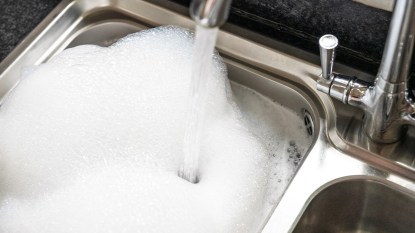Transform Your Home With Martha Stewart’s Organizing Secrets
Taking your home from cluttered to calm is easier (and more affordable!) than you think. Here, America's top lifestyle expert shares her brilliant fixes for your messiest spots.
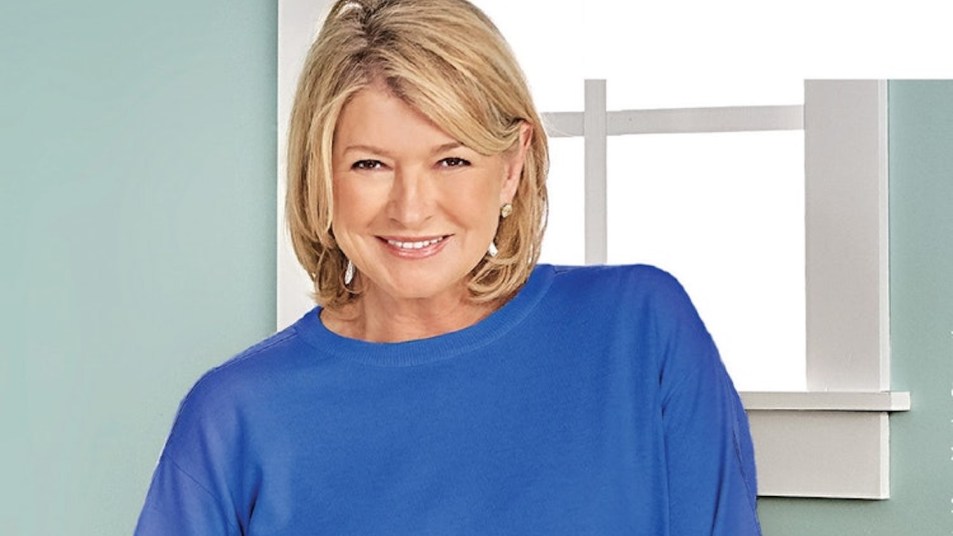
Even Martha Stewart’s kitchen counter is sometimes littered with newspapers, books, and to-do lists. “I like to come home to order, but I don’t have a lot of time to do it,” she tells Woman’s World. Yet Stewart is convinced that having an orderly home doesn’t mean getting rid of everything. “There’s so much value in what we’ve collected during a lifetime: things that remind us of good times and teach our children about the past.”
Her solution? Organizing — not ousting. “My approach is about feeling good about what you have accumulated: finding places to put it, ways to use it, and ways to keep it in order,” says Stewart.
At age 78, she continues to find ways to make her own spaces more functional and peaceful. After 17 years, she recently solved a tiny closet problem at her three-bedroom home, a project that inspired a new line of products with California Closets. Now, she’s sharing her wealth of wisdom curated over the decades in her new book, Martha Stewart’s Organizing ($18, Amazon).
Best of all, Stewart’s tips don’t just keep things tidy for a time. “They create ongoing success!” she cheers. Here, find her best solutions for your worst clutter hot spots.
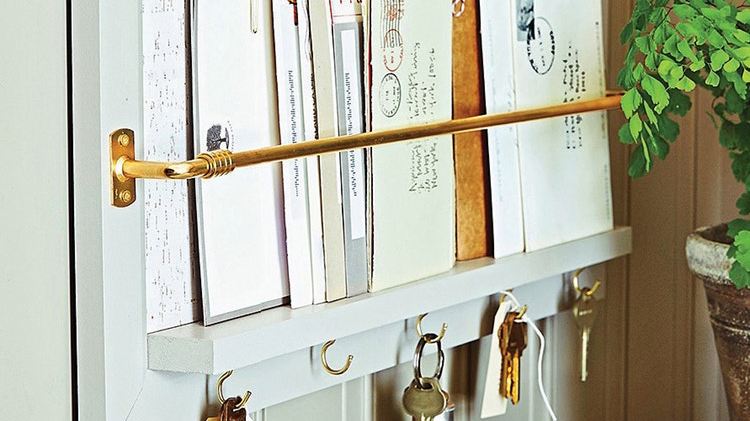
1. Create Your Own “Command Center”
Having a savvy one-stop hub where you can find your keys, mail, and the like simplifies the daily routine of dashing out the door. “It works amazingly well for me,” says Stewart. “It’s all right there, so I’m set to do the kind of work that I have to do to run the house.”
To make your own command center, affix a piece of wood from the hardware store to the bottom of a store-bought corkboard ($17.93, Amazon), creating a ledge. Then, attach a few hooks for hanging keys and a simple curtain rod (as shown) to keep important notes, memos and to-do’s, such as invitations, letters, and bills, in view. Notes Stewart, “You can even paint it to match your decor!”
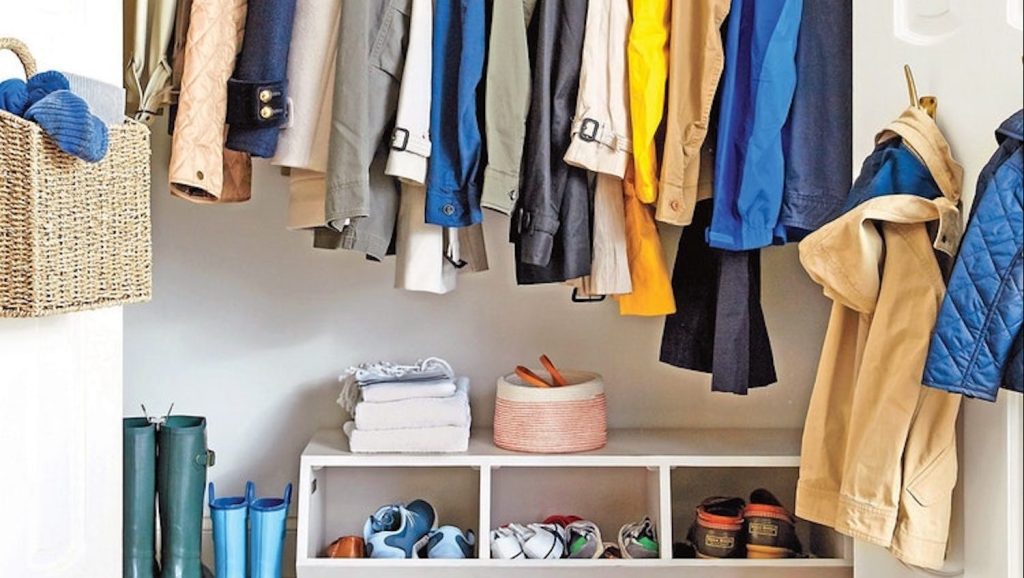
2. Cure Closet Chaos
“A closet near the front door is the holy grail of entryway organization — and you can improve this area very quickly,” assures Stewart. Her simple solution for a cluttered closet is to utilize door space by hanging baskets and a small mirror for last-minute touchups.
When it comes to all those items taking up valuable real estate on the top shelf, Stewart says, “If they haven’t been touched for six months, move them to longer-term storage.”
Also smart: Color-coding hangers for each family member, using paint or ribbon. “Everyone is happier if they know where things go.”
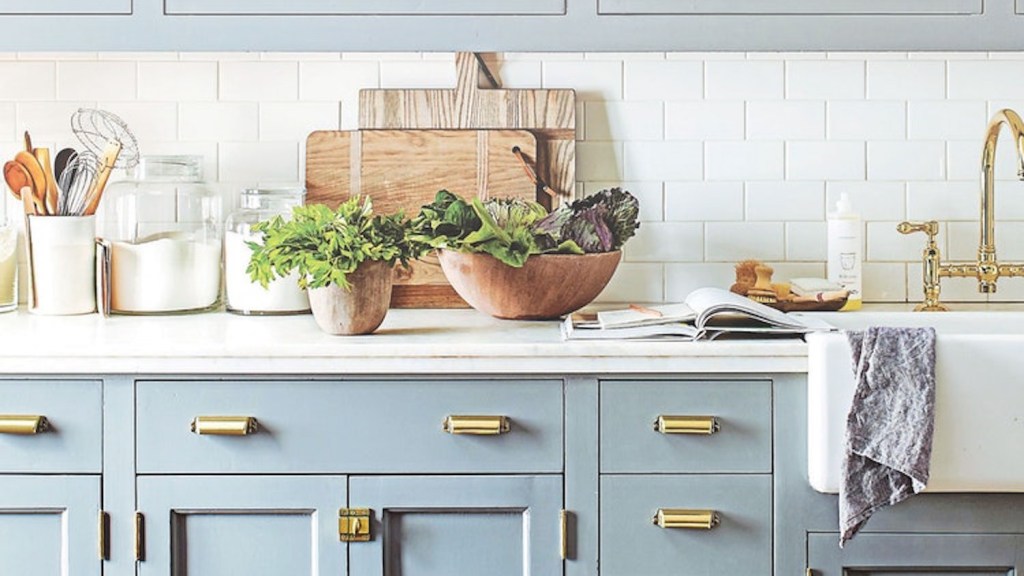
3. Tidy Up the Sink
The sink is one of the busiest spots in the home, so keeping it organized and clean is key. “Getting a pretty bottle for my dish soap changed the whole look of the sink area,” says Stewart.
She suggests decanting your favorite liquid soap into a reusable bottle ($12.49, Amazon), then placing scrubbers and sponges into their own holders ($6.99, Amazon). Small details like this can make a room feel neater and more spacious.
You can also avoid rummaging under the sink for cleaning supplies by using a lazy Susan ($19.99, Amazon) to keep everything within reach.
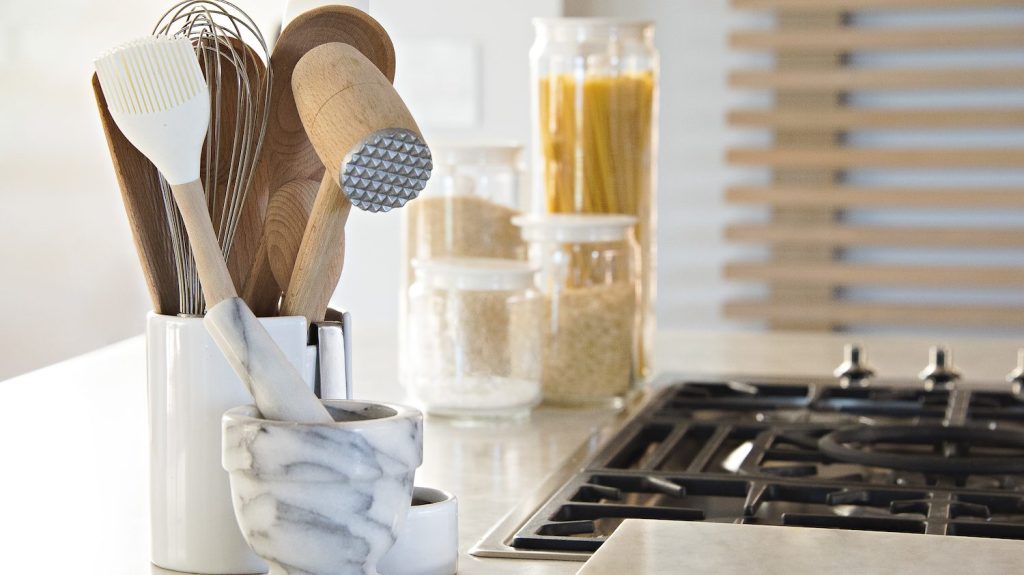
4. Sort Cooking Essentials
Sorting and stowing your cooking tools and ingredients will make meal prep a breeze! “It shouldn’t take you more than 30 seconds to find what you need,” says Stewart.
To find things fast and maximize your space, sort tools by use (savory vs. baking), material (wooden vs. metal), or category (spoons vs. whisks) into different crocks ($22.77, Amazon).
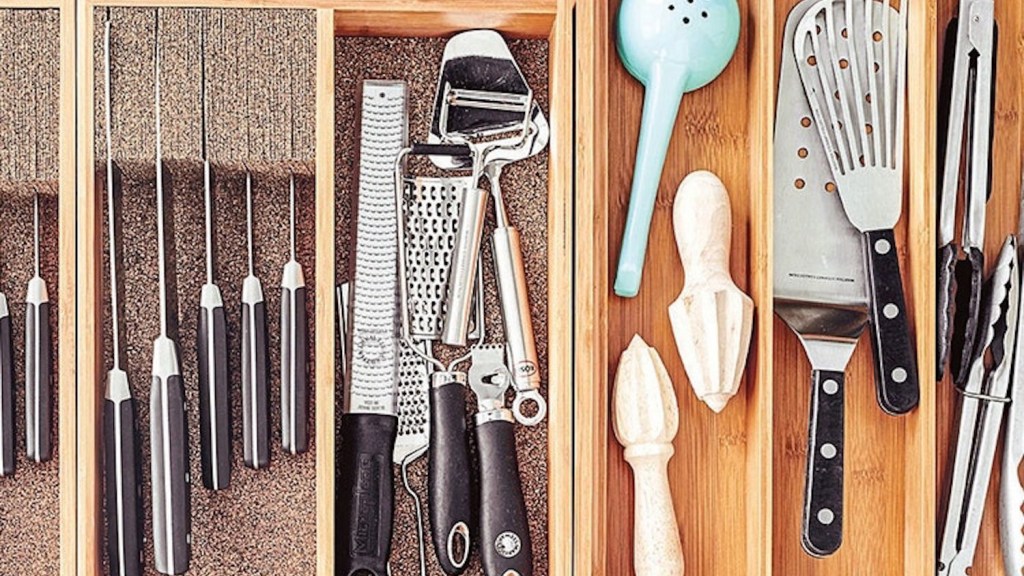
5. Create Food-Prep “Families”
“After living in the same place for a long time, you learn what works in the kitchen. And using inexpensive drawer dividers totally helps,” says Stewart. She advises separating go-to tools into “families” using handy separators ($22.97, Amazon). For knives, you can even use a cut-to-fit cork cushion to ensure blades are protected and save counter space.
Stewart adds, “I have a drawer for everything: like one for bartending. If you want to open a bottle of wine, you know where you’re going to find the corkscrews.”
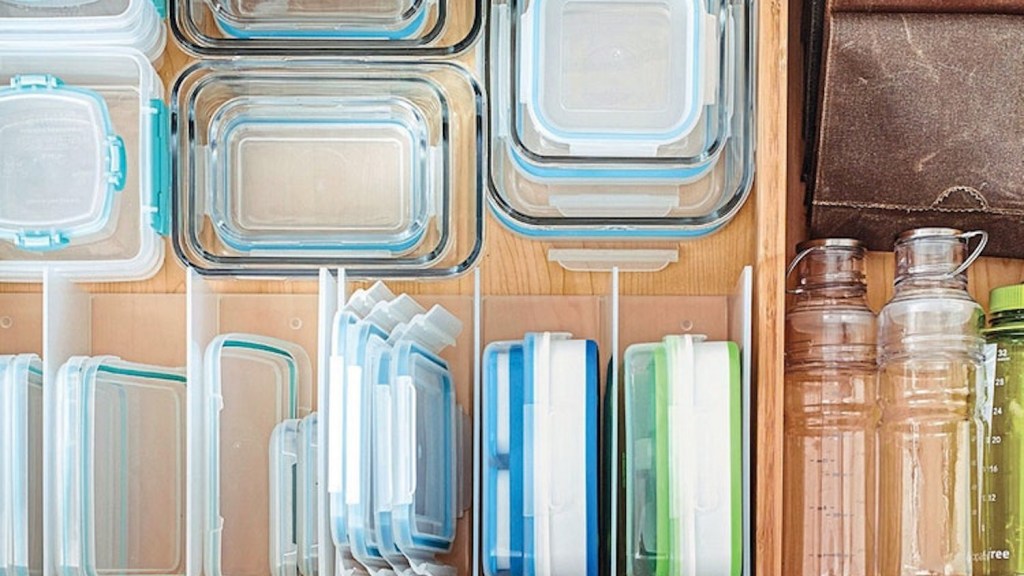
6. “File” Containers Vertically
The overflowing Tupperware area is a notorious mess-maker, but Stewart assures it can be conquered! “I have a lot of stuff because I do a lot of cooking, but I can find what I’m looking for,” she says.
How does she do it? By storing or “filing” storage lids vertically into drawers with dividers ($22.97, Amazon), tension rods, or pegs to keep everything visible. She then nests matching sets of storage container bottoms into neat piles. “They will look so much tidier in and out of use, and they just might motivate you to make items ahead of time and be more intentional in creating and using leftovers,” she says.
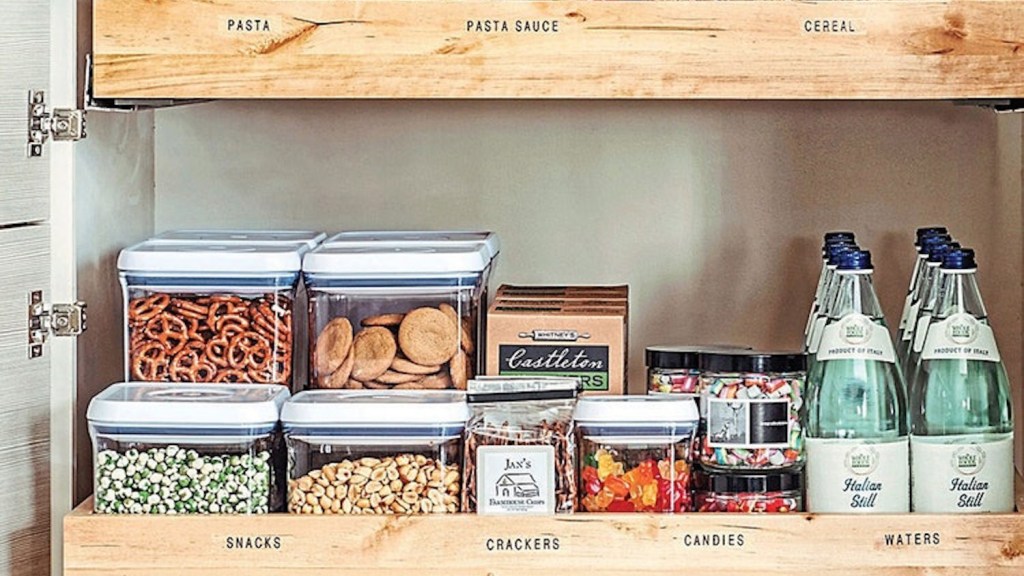
7. Gauge Pantry Goods At a Glance
Maintaining a neat pantry saves you precious time. “Staying organized helps you be more productive,” says Stewart. The home guru recommends pouring dry goods in see-through, sealed containers ($49.99, Amazon) so you can instantly spot items that are running low. “They don’t have to be all new or matching jars,” she says.
From there, you can create pantry “stations” by grouping like items together. “I keep oils on one shelf, vinegars on another, and salts on another,” she explains.
Lastly, label shelves so that you can quickly find what you’re looking for.
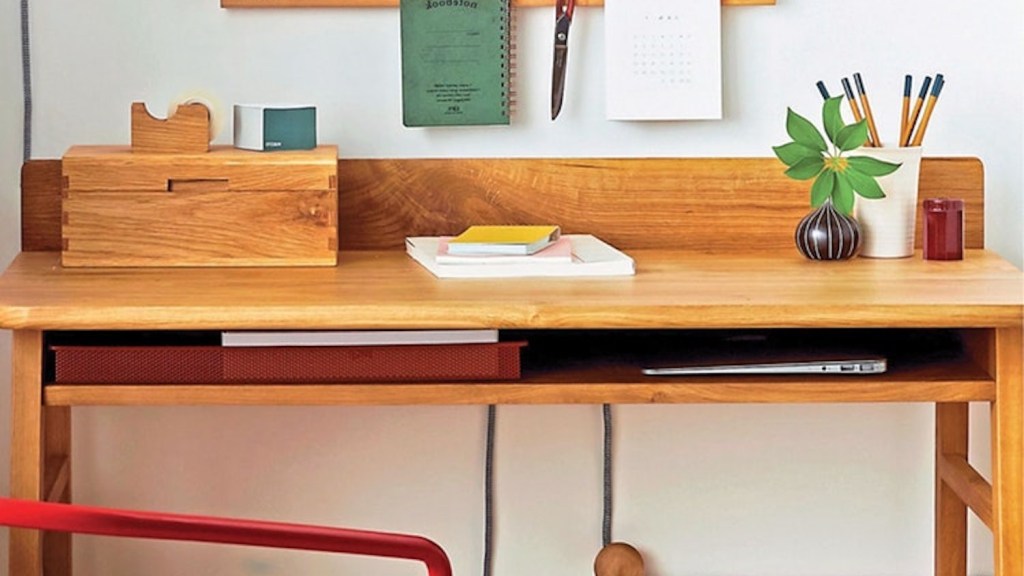
8. Tuck Away Home Office Extras
“My home office used to be in a closet. That’s the kind I like. You can close the door and nobody has to see your mess,” says Stewart.
To make your space functional, she advises keeping out only what you use often on top of the desk and tucking everything else away onto shelves or into bins.
Another pro tip? “If you’re right-handed, keep all the supplies on the right side, and vice versa,” she counsels, noting the exception of the desk lamp, which should be placed on the opposite side to avoid shadows.
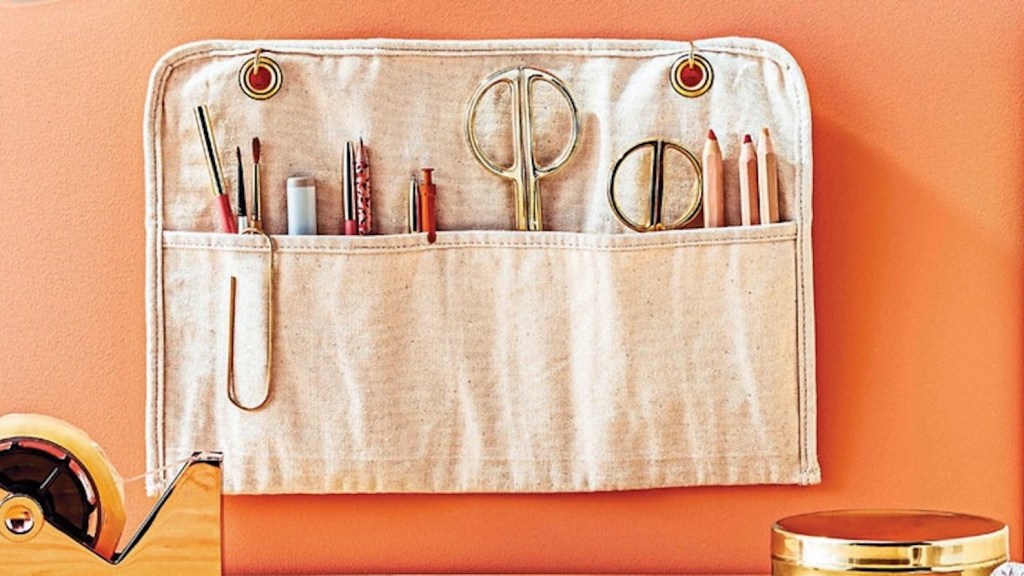
9. Keep Supplies Within Reach
“Doing things, using your hands around the house, creating beauty, is something that gives you a lot of self-confidence,” says Stewart. “Keep essentials within easy reach.”
A hanging pocket organizer ($19.99, Amazon) will do just that while freeing up desk space. You can also make your own out of fabric.
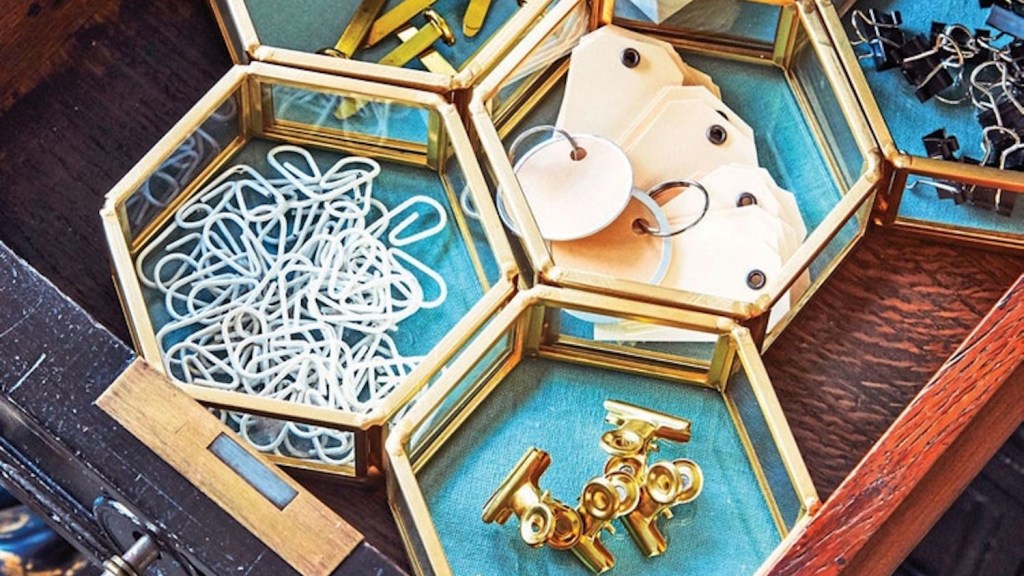
10. Group Odds and Ends
“If I grab a bunch of paper clips, I don’t want to have a tangle of all different sizes,” says Stewart. Instead, she likes to store them in containers that nest together neatly ($8 each, Urban Outfitters), reducing lost space.
Says Stewart: “I’m always buying little bowls or vessels to keep odds and ends. … You’re no longer wasting time looking for stuff. You can just sit down and do a task!”
For more smart tips, pick up Stewart’s new book, Martha Stewart’s Organizing: The Manual for Bringing Order to Your Life, Home & Routines, $18, Amazon
This story originally appeared in our print magazine.













